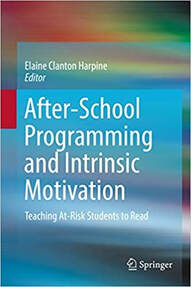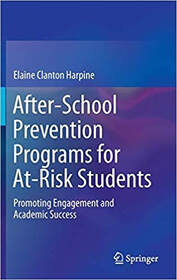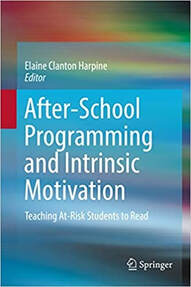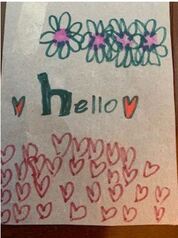
Yes, the battle continues as the start date for school draws near. Is it physically sitting in a classroom, or, instead, curriculum and how curriculum is used that determines instructional effectiveness?
Education is failing across the nation. The spring attempt at online classes was, for the most part, a failure, but will simply putting children back in the classroom solve the problem? No, because just having students physically sitting in a classroom is not the answer. Schools are arguing, as usual, over what should be taught, but this year they are also arguing over where students should be taught.
Some schools are going with totally online classes until it is safe to send children back to school. Other schools are using an alternate day plan—some students will go one day; others will go the next day. While still other schools are offering parents choices. Parents may choose in-class instruction by sending their children to school or parents may choose online instruction and assist with class assignments from home until they feel it is safe for children to return to school.
President Trump demands that students return to school. Department of Education, Secretary DeVos, says that it’s safe, but is it?
Can anyone truly promise that it is safe to send children back to school?
Dr. Fauci, Director of the National Institute of Allergy and Infectious Diseases for over 35 years and identified as one of the world’s leading authorities on infectious diseases, spoke recently with Dr. John Whyte, the chief medical officer at WebMD on the program entitled Coronavirus in Context. This was an excellent interview, and I encourage you to read it in its entirety.
As Dr. Fauci warned,
“…people’s opinions are a fact of life. What gets, um, I think troublesome, is when people develop their own set of facts. Facts don’t change. So you have a different opinion, but facts are consistent. That’s the problem.”
When Dr. Fauci was asked if he thought it was safe for schools to reopen, he said,
“… It really is going to depend on what the viral activity is in the place …. There are some counties, … We have 3,007 counties in the United States.… some counties where there’s so little viral activity, you could just say, don’t worry about it. Go back to school. But there are others, … where there’s enough activity where you’ve got to make a choice. And the choice can either be, don’t bring the kids back or, preferably, bring them back in a way that is very, very geared towards guaranteeing their safety, and their welfare, and the safety and the welfare of the teachers…. To say, we are going to open up schools in the United States or not. That doesn’t make any sense, because we’re such a big, big country, that things are going to be different in one region versus the other.”
The school reopening question has been taken over by politics. Safety is being ignored. Science is being ignored. As coronavirus numbers soar, politics reigns, but there is also another problem overshadowing the reopening of schools this fall. A problem that cannot and will not be solved by simply sending children and teachers back into the classroom. We have a curriculum problem. Reading scores were lower in fourth and eighth grade in 2019.
Absolutely no one can guarantee that simply returning children to the classroom will enabled them to learn. I am writing a series on 20 Reasons Why Reading Scores Were Lower in 2019 than 2017. That means, we are looking at 20 reasons why more children could not read at grade level in 2019 than could read at grade level in 2017.
Something went wrong in the classroom. Scores should have been better in 2019, not worse. These test scores were before the coronavirus pandemic. Therefore, these test scores come from children who were sitting in school classrooms.
Why were reading scores worse in 2019? One major reason is curriculum
Regardless of whether we teach in class or online, one of the main determinants for how much children and teens learn in school is curriculum and how it is used.
Read more: Reason #7 That Reading Scores Were Lower in 2019: The Three Cueing System
First, let’s define what we mean by curriculum:
“Curriculum … encompasses the program of instruction ... and related resources (like lessons, activities, units, and textbooks) – that school districts use to ensure students master the academic standards each year in their coursework. While the standards lay out what students are expected to know in a given subject, curriculum provides an instructional guide for teachers so that their students meet those expectations. Curriculum includes teaching materials such as those that can be found in commercial textbooks and software applications; it also includes the pedagogy for delivering those materials when educators receive guidance on how to teach the curriculum, or when software manages the pacing, prompts, and feedback that students receive as they engage with the materials. Unlike the reading/language arts, mathematics, and science standards, which are created by states, curriculum choices are made at the local level, with varying degrees of state involvement or oversight. For example, some states create lists of approved textbooks that districts must choose from. Moreover, instructional decisions about what to do with that curriculum are made every day by classroom teachers.” (p. 4)
To clarify, state standards are the expectations of what students should know by the end of the school year. Curriculum is the means by which children learn or accomplish those standards. From this definition, we can immediately see several problems that could arise.
Why is curriculum a problem?
First, research shows that many adopted school textbooks and other curriculum material do not meet state standards. Publishers often advertise that they meet the standards, but when analyzed, the curriculum does not fulfill student needs.
Let’s look at an example in reading. In one review by Education Reports, only three out of five curriculum choices for foundation early reading and writing were found to be even partially in keeping with the standards. Yet, these are programs being used by schools.
Research shows that it does not cost schools more to provide high quality curriculum rather than poor quality instructional materials and using higher quality teaching materials can definitely improve learning. As two different research studies stated:
“Textbooks are relatively inexpensive and tend to be similarly priced…. The marginal cost of choosing a more effective textbook over a less effective alternative is essentially zero.”
“…switching to a high-quality curriculum may be a more cost-effective way to raise student achievement than several other school-level interventions.”
If selecting more effective curriculum doesn’t cost more money and better-quality curriculum can produce higher student achievement, why are schools still selecting poor quality curriculum?
Curriculum selection is as politicized as the question on whether schools should reopen for in class instruction this fall. No one is measuring accuracy, quality, or effectiveness. It’s all about politics and money.
“…politics often dominate the discussion over the adoption of textbooks and other instructional material, and issues such as the teaching of evolution are often center stage. There is also a clear gap between the reality of which curricula are effective or aligned to state standards and the curricula that publishers advertise as such…. When hard evidence on curriculum quality is available, it should supersede the often vague impressions of stakeholder groups that frequently dominate the process.”
Several years ago, I served on a curriculum selection committee. I was in a university community and there were several of us from the University. The only guidelines we were given for the textbook selection were to “look at these books and see which ones you like.” Unfortunately, this is how many textbooks are selected.
How can schools tell the difference between high-quality curriculum and low-quality or inaccurate curriculum material?
Independent testing is needed. Most curriculum textbooks and/or teaching materials are never tested to make sure that they are effective; instead, schools just take the publishers word for it. We need to test what makes one curriculum more effective than another. We need longitudinal effectiveness studies covering 4 years of student progress or more. We also need to know the effective of curriculum in different school settings. Actual research comparing textbooks and other curriculum is very rare. When we consider that the curriculum chosen by schools or states can determine the success or failure of students in the classroom, this is a major problem in our educational system today.
When schools select a textbook, they also select a teaching method
In reading, the battle over teaching method has often been referred to as the “Reading Wars.” At present, the most common teaching methods being used in public school classrooms are whole language, phonics, and blended literacy.
Whole language is a teaching method that emphasizes recognizing whole words, includes cueing, memorizing sight words, and guessing. This method was proven to totally not work in 2015 through neuroimaging research by Yuliya Yoncheva’s research team as reported in the Brain and Language journal. Yet, whole language and cueing are still being taught in classrooms today and on the Internet. When schools buy textbooks that teach the whole language approach, they are buying and teaching a teaching method that has been proven ineffective. This creates reading failure.
Phonics is a method of teaching reading that groups letter sounds together and teaches rules that predict when these sounds will appear in a word. Unfortunately, these predictions are only accurate about half of the time. This leads to major problems with students who struggle in reading. I have several blogs citing research on why phonics fails, but probably the best summation on phonics comes from Dr. Sally Shaywitz.
“Children do not learn to read by memorizing a word list. Most children, especially those who struggle in reading, do not learn to read by memorizing phonics rules.” (p. 78)
More: Reason #5 for Reading Scores Being Worse in 2019: Incorrect Phonics Rules and Explanations
Blended literacy is nothing more than a name for whole languagee with phonics tacked on. No, it doesn’t work either.
Will sending children back into the classroom guarantee quality education or that children will learn?
No, just sitting in a classroom is not what enables students to learn. Research shows that the selection of curriculum can be one of the most important ways that schools can help students learn.
When schools select a failed or disproven teaching method, they are contributing to reading failure. Reading failure leads to academic failure. If a student cannot read, they cannot excel in social studies, in science, or even in math. Reading is essential; therefore, schools must select curriculum that will enable teachers to teach children to read, all children.
Textbooks are not the only problem
Quality standards are needed for online curriculum materials. Teachers change or add materials to the adopted curriculum. The Internet is often a primary source for additional classroom curriculum material. The quality of the material found on the Internet is not guaranteed to be good or to meet state standards. Some online sources provide quality educational materials; unfortunately, some online sources offer poor quality materials or in some cases inaccurate curriculum material. Some teachers develop very high quality self-developed materials, some do not. What should schools do?
At present, anyone can add anything to the Internet and call it curriculum. We need to establish scientific testing for online curriculum materials. We need to test the effectiveness of teacher selected and teacher created resources as well as school selected curriculum.
Independent research needs to be conducted and posted, grouping Internet curriculum materials into effective curriculum choices and poor choices so educators selecting curriculum from the Internet can incorporate high-quality teaching materials back into the classroom.
Even high-quality curriculum does not always guarantee effective education
“Curriculum plays an important role in how students are taught, and there is a strong body of evidence that shows that putting a high-quality curriculum in the hands of teachers can have significant positive impacts on student achievement.”
Is curriculum change enough? First, we need high-quality curriculum. Curriculum that has been tested and proven to be successful, but actual effectiveness is often measured by how curriculum is used. So, we also need to train teachers to use curriculum correctly. For even the best curriculum can be used incorrectly and thereby made to be ineffective.
In my reading clinic, I use vowel clustering. I teach students to match letter sounds to the oral language system. There are no rules to memorize, and students are never allowed to guess at a word. Vowel clustering teaches students to break words down into individual letter sounds or clusters and then reassemble those sounds back into pronounceable words. Vowel clustering also teaches spelling, handwriting, oral reading, fluency, comprehension, and story writing. Vowel clustering has eight years of research data showing its effectiveness. Vowel clustering works with struggling, at risk, and failing students. A student, who had failed for nine years using balanced literacy and phonics, learned to read in 3 ½ years using vowel clustering. I have even had struggling students move up four grade levels in reading in one year using vowel clustering. These were students who had failed multiple years in schools that used curriculum for whole language, balanced literacy, and phonics. So yes, we can teach students to read, but to do so, we must change the curriculum and teaching methods that we use to teach reading. Curriculum makes a difference in success or failure in reading.









 RSS Feed
RSS Feed
